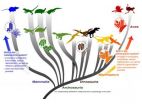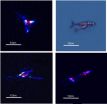(Press-News.org) Tobacco companies lack strong, relevant evidence to support their claims that standardised (plain) packaging of tobacco products in the UK won't work, finds research published in the online journal BMJ Open.
The aim of plain packaging, with no logos, brand imagery, symbols, or promotional text, is to restrict the already limited opportunities that transnational tobacco companies have to market their products, and deter people from starting smoking.
Australia adopted plain packaging for tobacco products in 2012, the same year that the Department of Health in England held a public consultation on similar plans. The Department then said it wanted to wait for more evidence of the likely impact on tobacco consumption before adopting the policy.
It has since commissioned an independent review of evidence relating to unbranded and standardised packaging, which is due to report this spring.
The researchers analysed evidence cited in submissions made to the Department of Health's consultation on plain packaging by the UK's four largest transnational tobacco companies: Imperial Tobacco; Japan Tobacco International; Philip Morris Ltd; and British American Tobacco.
The four companies submitted lengthy consultation responses - 1521 pages in total, of which 328 comprised their main responses and 1193 provided supplementary material.
In these submissions, the companies rejected the conclusions of a systematic review, commissioned by the Department of Health, that there was "strong evidence" that plain packaging would reduce the appeal of tobacco products and increase the prominence of health warnings.
Instead, they argued that there is no evidence that plain packaging would reduce smoking prevalence or deter people from starting to smoke.
The researchers looked at the volume, relevance (subject matter) and quality (as measured by independence from industry, and peer review) of the evidence cited by the companies and compared it with the evidence from the systematic review.
Seventy seven out of 143 pieces of evidence were used to promote the companies' claim that plain packs "won't work". Of these, only 17 (22%) addressed standardised packaging, 14 of which were linked to industry. None was published in peer reviewed journals - a key hallmark of quality.
Compared with the evidence in the systematic review, relevant evidence cited by the tobacco industry was of significantly lower quality.
Across all 77 documents, evidence linked to industry was significantly less likely to have been published in a peer reviewed journal than the independent evidence cited by them.
"With few exceptions, evidence cited by [transnational companies] to promote their claim that standardised packaging 'won't work' lacks either policy relevance or key indicators of quality," conclude the authors.
INFORMATION:
[A critical evaluation of the volume, relevance and quality of evidence submitted by the tobacco industry to oppose standardised packaging of tobacco products doi:10.1136/bmjopen-2013-003757]
Tobacco industry claims 'plain' packs won't work based on weak evidence
Most studies lack policy relevance; and relevant research lacks key indicators of quality, including peer review
2014-02-13
ELSE PRESS RELEASES FROM THIS DATE:
Hospitals not always prepared for full costs of implementing electronic patient records
2014-02-13
Hospitals don't always take into account the full costs of implementing new electronic health record systems and should be better prepared if they are to maximise the benefits, finds research published online in the Journal of the American Medical Informatics Association (JAMIA).
Electronic health record (EHR) systems can improve the safety, quality, and efficiency of healthcare in hospitals, and their adoption is a priority for the UK and US governments.
But despite their promise and the existence of EHRs in UK primary care for several decades, UK hospitals have been ...
Revision to rules for color in dinosaurs suggests connection between color and physiology
2014-02-13
New research that revises the rules allowing scientists to decipher color in dinosaurs may also provide a tool for understanding the evolutionary emergence of flight and changes in dinosaur physiology prior to its origin.
In a survey comparing the hair, skin, fuzz and feathers of living terrestrial vertebrates and fossil specimens, a research team from The University of Texas at Austin, the University of Akron, the China University of Geosciences and four other Chinese institutions found evidence for evolutionary shifts in the rules that govern the relationship between ...
Many stroke patients on 'clot-busting' tPA may not need long stays in the ICU
2014-02-13
A Johns Hopkins study of patients with ischemic stroke suggests that many of those who receive prompt hospital treatment with "clot-busting" tissue plasminogen activator (tPA) therapy can avoid lengthy, restrictive monitoring in an intensive care unit (ICU).
The study challenges the long-standing protocol that calls for intensive monitoring, mostly done in ICUs, for the first 24 hours after tPA infusion to catch bleeding in the brain, a side effect seen in 6 percent of patients treated with the medication.
Results show that a relatively simple measure of stroke severity ...
Whales viewed from space
2014-02-13
High-resolution satellite images may be a useful tool for counting whale populations for conservation purposes, according to a study published in PLOS ONE on February 12, 2014 by Peter Fretwell from British Antarctic Survey, UK, and colleagues.
In the study, the authors selected one of the largest southern right whale populations, breeding off the Argentinian coast. The population was selected, due to its large size and tendency to bask near the surface in large aggregations around sheltered coastal waters during breeding season. Scientists used this population to test ...
Mathematical beauty activates same brain region as great art or music
2014-02-13
People who appreciate the beauty of mathematics activate the same part of their brain when they look at aesthetically pleasing formula as others do when appreciating art or music, suggesting that there is a neurobiological basis to beauty.
There are many different sources of beauty - a beautiful face, a picturesque landscape, a great symphony are all examples of beauty derived from sensory experiences. But there are other, highly intellectual sources of beauty. Mathematicians often describe mathematical formulae in emotive terms and the experience of mathematical beauty ...
Two strategies for accurate dart throwing
2014-02-13
Timing of dart release or hand position may improve dart throwing accuracy, according to a study published in PLOS ONE on February 12, 2014 by Daiki Nasu from Osaka University, Japan and colleagues.
Two major strategies are attributed to accurate throwing: timing the object release, and the using hand positioning at release to compensate for releasing the object at variable times. To better understand these strategies, researchers investigated whether expert dart players utilize hand movement that can compensate for the variability in their release timing. The study compared ...
Ancient reptile birth preserved in fossil
2014-02-13
Ichthyosaur fossil may show the earliest live birth from an ancient Mesozoic marine reptile, according to a study published February 12, 2014 in PLOS ONE by Ryosuke Motani from the University of California, Davis, and colleagues.
Ichthyosaurs were giant marine reptiles that evolved from land reptiles and moved to the water. Scientists report a new fossil specimen that belongs to Chaohusaurus (Reptilia, Ichthyopterygia), the oldest of Mesozoic marine reptiles that lived approximately 248 million years ago. The partial skeleton was recovered in China and may show a live ...
Satellites help spot whales
2014-02-13
Scientists have demonstrated how new satellite technology can be used to count whales, and ultimately estimate their population size. Using Very High Resolution (VHR) satellite imagery, alongside image processing software, they were able to automatically detect and count whales breeding in part of the Golfo Nuevo, Peninsula Valdes in Argentina.
The new method, published this week in the journal PLoS ONE, could revolutionise how whale population size is estimated. Marine mammals are extremely difficult to count on a large scale and traditional methods, such as counting ...
Brain process takes paper shape
2014-02-13
A paper-based device that mimics the electrochemical signalling in the human brain has been created by a group of researchers from China.
The thin-film transistor (TFT) has been designed to replicate the junction between two neurons, known as a biological synapse, and could become a key component in the development of artificial neural networks, which could be utilised in a range of fields from robotics to computer processing.
The TFT, which has been presented today, 13 February, in IOP Publishing's journal Nanotechnology, is the latest device to be fabricated on paper, ...
Doctors are missing chance to diagnose COPD in up to 85 percent of cases, study finds
2014-02-13
A retrospective, 20-year study led by researchers at Plymouth University Peninsula Schools of Medicine and Dentistry shows that in up to 85 per cent of patients with chronic obstructive pulmonary disease (COPD) the underlying disease was being overlooked. Missed opportunities occur commonly in both primary and secondary care. The paper demonstrates the pointers to help GP to come to a earlier diagnosis. The findings are published in The Lancet Respiratory Medicine today, Thursday 13th February 2014.
The study encompassed almost 39,000 patients and showed that, in the ...
LAST 30 PRESS RELEASES:
Chicago health information leader recognized for raising CPR readiness and blood pressure awareness
The Intimate Animal, a new book from Kinsey Institute Executive Director Dr. Justin Garcia
When blue-collar workers lose union protection, they try self-employment
New video dataset to advance AI for health care
MEA-based graph deviation network for early autism syndrome signatures in human forebrain organoids
New modeling approach sheds light on rare gut disease
Study documents potentially hazardous flame retardants in firefighter gear
Can certain bacteria regulate aging of the immune system and its related alterations?
AI model helps diagnose often undetected heart disease from simple EKG
There are fewer online trolls than people think
Cell membrane fluctuations produce electricity
Jeonbuk National University study shows positive parenting can protect adolescents against self-harm
Surface-engineered ZnO nanocrystals to tackle perfluoroalkyl substance contamination
This new understanding of T cell receptors may improve cancer immunotherapies
A new fossil face sheds light on early migrations of ancient human ancestor
A new immunotherapy approach could work for many types of cancer
A new way to diagnose deadly lung infections and save lives
40 percent of MRI signals do not correspond to actual brain activity
How brain-inspired algorithms could drive down AI energy costs
Gum disease may be linked to plaque buildup in arteries, higher risk of major CVD events
Contrails are a major driver of aviation’s climate impact
Structure of dopamine-releasing neurons relates to the type of circuits they form for smell-processing
Reducing social isolation protects the brain in later life
Keeping the heart healthy increases longevity even after cancer
Young adults commonly mix cannabis with nicotine and tobacco
Comprehensive review illuminates tau protein's dual nature in brain health, disease, and emerging psychiatric connections
Book prepares K-12 leaders for the next public health crisis
Storms in the Southern Ocean mitigates global warming
Seals on the move: Research reveals key data for offshore development and international ecology
Sports injuries sustained during your period might be more severe
[Press-News.org] Tobacco industry claims 'plain' packs won't work based on weak evidenceMost studies lack policy relevance; and relevant research lacks key indicators of quality, including peer review


